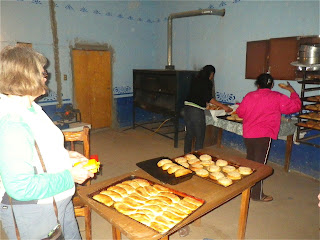Batopilas is considered the "Treasure of the Sierra Madre" because of it's historic past and present beauty. Founded in 1709 as San Pedro de Batopilas when the Batopilas mines were discovered, the small pueblo slowly, but steadily flourished due to this mining activity.
The Jesuit mission of San Miguel de Satevó, just outside the town, is known as the "Lost Mission" as there are no records describing it's existence. Believed to have been constructed in the 1760's, the mission is one of the canyon's best preserved. It's setting is ideal near the edge of the Batopilas River.
The silver mines of Batopilas were some of the richest in Mexico. In the 18th and 19th century both Spaniards and Mexicans gained great wealth out of the area. American John Robinson purchased an old claim in 1861 which turned out to have a large, hidden vein. He decided to sell the claim to fellow American Alexander Shepherd for $600,000 US in 1880.
Alexander Shepherd was the last mayor of Washington, D.C. and had been ousted under unproven corruption charges. Once Shepherd moved his family to Batopilas, he filed over 350 mining claims and formed the Batopilas Mining Company. His mines became some of the wealthiest in the world at their peak.
Noting the difficulty and time (over eight days) of transporting the silver ore to Chihuahua, Shepherd opened his own facilities and foundry along the river at his Hacienda San Miguel. Over 20 million ounces of silver were extracted from the mines, and this great wealth allowed Shepherd to bring cultural events and technological advances to this once sleepy town. Batopilas was the second city in Mexico to have electricty. His hydroelectric works provide the towns power still and he also built an aqueduct which is still in use today. So famous for it's wealth were Shepherd's mines that Pancho Villa once robbed a mule shipment of $40,000 US in silver bars.
Alexander Shepherd died in 1902, leaving the mines to his sons who ceased operation in 1920, although other miners would later try unsuccessfully to restart the old mines. In 1938, one son, Grant Shepherd, wrote The Silver Magnet about life in Batopilas and Alexander Shepherd. It is an excellent description about this once world famous town.
| 























No comments:
Post a Comment